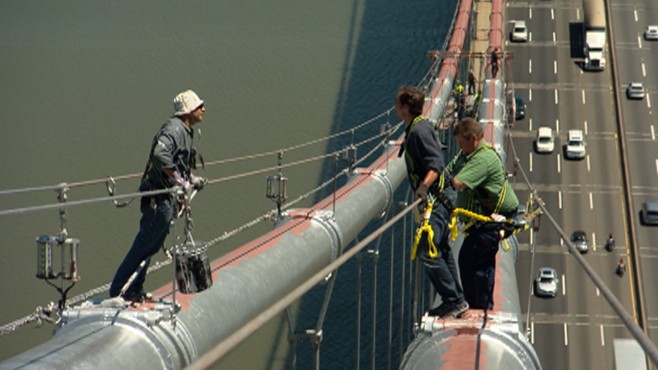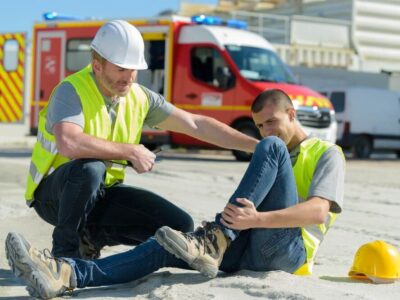Virtually every type of profession available in California brings with it some degree of risk, but statistics show that your risk of suffering a serious work-related injury or fatality climbs considerably if you work within one of several specific fields. Just how high your level of work-related danger is depends not only on your profession, but also on the steps you and your employer take to enhance safety. However, there are still certain professions that expose you to considerably more workplace dangers than others.
Understanding the Real Danger Behind the Jobs
For example, Time magazine notes that you face the nation’s most significant risk of workplace danger if you make your living as a logger. According to 2014 statistics, for every 100,000 loggers in the profession, about 111 lose their lives every year. Why? Working from heights, working in rural areas where medical care is hard to come by, and working around falling branches and related hazards are just a few of the reasons loggers face such a high risk of workplace danger.
After loggers, fishers, and others in the fishing industry face the nation’s highest level of work-related danger, with 80 workers in the industry dying each year for every 100,000 employed. Also included in the top five most dangerous jobs in America were those held by pilots, roofers, and recyclable material collectors, all of whom face their work-specific hazards. Job-related risks faced by police officers are also increasing, with police officers now holding the 15th most dangerous job in America, climbing two spots from the year prior.
What Makes These Jobs So Hazardous?
The danger in these professions comes from a mix of environmental hazards, job complexity, lack of immediate medical care, and sometimes insufficient safety practices. Below, we explore not only the fatality statistics but also dive deep into environmental, equipment, training, and legal exposure factors for each role.
Logging
Loggers are surrounded by hazards, from falling trees to chainsaws and unpredictable weather. Logging is often conducted in remote forest areas where emergency medical services are hours away. These locations also involve unsteady terrain and the need for precise communication; any failure in protocol can be fatal.
Moreover, California’s mountainous regions, like those in the Sierra Nevada, pose unique challenges, including altitude sickness, slippery slopes, and mechanical equipment malfunction in rugged conditions. Despite OSHA’s safety requirements for fall protection, hazard communication, and protective gear, many small logging operations underreport safety violations due to a lack of regulatory oversight.
Commercial Fishing
The fishing industry, especially in regions like the Pacific Coast and the Bay Area, combines severe maritime weather with sleep deprivation, heavy lifting, and dangerous machinery. Fatalities are typically caused by falling overboard, vessel disasters, and entanglement in nets and lines.
Unlike land-based jobs, emergency response is delayed at sea, making the smallest mistake potentially fatal. Employers are required to provide safety gear like life vests and emergency beacons, but in practice, many vessels are outdated and lack modern safety compliance due to high operational costs.
Roofing
Roofing involves constant work at heights, often under extreme weather conditions. Heat stress, slippery surfaces, and missteps on sloped roofs contribute to a high incidence of fatal falls and injuries from power tools.
In California, roofing also intersects with solar panel installations, increasing electrical hazards. Many construction and roofing companies violate Cal/OSHA’s requirements regarding harness use, scaffold standards, and heat illness prevention, especially among undocumented or migrant workers who hesitate to report unsafe conditions.
Aviation (Pilots)
Small aircraft pilots, crop dusters, and medical helicopter pilots often fly in less controlled environments compared to commercial aviation. Fatalities result from equipment failure, extreme weather, and fatigue.
Aviation safety laws exist, but do not always extend to part-time, contract, or cargo pilots. The rise of private charter services with limited oversight has also increased fatality risks due to overwork, reduced maintenance checks, and tight turnaround schedules.
Recyclable Material Collectors
Often unrecognized, recyclable material collectors operate in hazardous environments, busy streets, unregulated dumpsites, and poorly maintained machinery. They are exposed to biohazards, sharp objects, and motor vehicle accidents while loading materials.
Many are subcontractors who lack formal training or protective equipment, making them more vulnerable. Despite legal requirements, violations of vehicle safety and worker classification laws are rampant.
The Role of Cal/OSHA and Workers’ Compensation in California
California employers must comply with Cal/OSHA regulations, which are among the most stringent in the U.S. These rules mandate:
- Fall protection in construction and logging
- Heat illness prevention programs
- Safety training in multiple languages
- Reporting of all workplace injuries and deaths
If an employer fails in these duties and an injury occurs, the employee has strong legal grounds to pursue compensation. Depending on the circumstances, a worker may be eligible for:
- Medical costs coverage
- Temporary or permanent disability payments
- Vocational rehabilitation
- Death benefits for surviving family members
Your Legal Options After a Workplace Injury
At Hussain & Gutierrez Law, we help high-risk workers get the justice they deserve. Whether you’re employed legally, undocumented, part-time, or as an independent contractor, you may still qualify for benefits.
If your employer denies liability, we can:
- Investigate safety violations and non-compliance
- Prove employer negligence or third-party fault
- Assist with filing Cal/OSHA complaints
- Represent you in appeals and hearings
Deeper Insights: Psychological & Financial Toll of High-Risk Jobs
Beyond physical injuries, high-risk jobs can cause lasting psychological trauma: PTSD, anxiety, and sleep disorders are common among police officers, loggers, and pilots. These conditions often go unreported due to workplace culture or stigma.
Financially, dangerous jobs may seem lucrative upfront but carry hidden costs, high insurance premiums, job instability, and lower life expectancy. Many injured workers are forced to change careers or live with chronic pain, impacting their quality of life and long-term earnings.
Frequently Asked Questions (FAQs)
What should I do immediately after a workplace injury in a high-risk job?
Seek medical help, report the incident to your employer in writing, and contact an attorney before signing any forms.
Can I get compensation if I’m an independent contractor?
California’s labor laws protect misclassified workers. You might still be eligible for compensation if we can prove you were an employee in practice.
What types of damages can I recover?
Medical expenses, lost wages, rehabilitation costs, and pain and suffering. In cases of gross negligence, punitive damages may also apply.
Do undocumented workers have rights?
Yes. California law allows all workers, regardless of immigration status, to claim workers’ compensation.
Can families of deceased workers sue?
Yes. Families can file a wrongful death lawsuit in addition to claiming death benefits under workers’ compensation.
Schedule Your Free Consultation Now
No one should suffer silently after a workplace injury, especially in jobs where danger is part of the job description. Hussain & Gutierrez Law specializes in high-risk job injuries and ensures our clients receive full legal support and compensation.
Or call us now at (818) 997-3701
We’re here to advocate for California’s workers, because your safety, your health, and your future matter.



